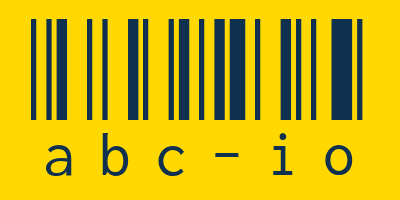
In less than a month, NBN Co will be upgrading the speeds of multiple internet plans available on its full fibre and HFC networks, marking the most exceptional speed boost since the inception of the network in 2009. It’s a move that’s been in the works for a long time, and service providers have been getting ready for the big switch (though a few have already jumped the gun).
If this is the first you’re hearing about it, here’s a quick rundown of what’s happening: fibre-connected homes serviced by either fibre-to-the-premises (FTTP) or hybrid fibre coax (HFC) on an NBN 100 plan will have their service upgraded to a brand new NBN 500 tier, which offers maximum theoretical download speeds of 500Mbps – or five times what NBN 100 was capable of. Meanwhile, NBN 250 is being upped to 750Mbps, NBN 1000 is getting a new minimum speed of 750Mbps, and a new top speed of 2,000Mbps (aka NBN 2000) is being introduced.
It’s a very exciting time for the Australian internet, and it’s set to improve speeds to be far more competitive against other developed nations across the globe – according to independent speed-testing organisation Ookla, Australia is currently ranked 63rd for average fixed-line internet speeds. NBN Co is expecting the new 500Mbps-capable plan to one day be its most popular, with that hope contingent on the continued deployment – and uptake – of the fibre upgrade program.
But a lot has happened behind the scenes to facilitate this speed boost. Retail service providers (RSPs) like Aussie Broadband have been building to this moment for years. TechRadar sat down with Aussie Broadband CSO Jonathan Prosser for a wide-ranging conversation about the imminent changes and how they’ll likely affect both providers and end users.
Getting ready for the speed boost
The NBN has morphed drastically over the years. After the country-wide rollout began in 2010, followed by a cost-saving solution to use existing copper infrastructure, the network’s speeds as a whole have lagged well behind many other countries – so when 1000Mbps-capable consumer plans were first introduced in 2020, the majority of Australian households and businesses couldn’t access it.
Today, full fibre plans are growing in uptake thanks to a proactive free fibre upgrade program run by NBN Co, but while that’s been going on, internet providers that purchase wholesale connections have been gearing up for the major network boost, ensuring along the way that consumers aren’t heavily impacted by sudden increase in demand.
“There is actually a truckload of work that we’ve had to do in order to be ready,” Prosser told TechRadar. “We always actively over-provisioned our CVC [the NBN bandwidth capacity in a geographic area]… what that has translated to is a very active capital management program at a network level, where we always over-invest in-year to make sure that we’re really ready for any future capacity. Because of that, we’ve been network ready for this future for quite a long time.”
One of the major hurdles that Prosser described was a switch over in the system from traditional CVC to what NBN Co calls CVC Max – a change that NBN Co introduced after consultation with its wholesale customers. CVC Max removes the network speed caps of the traditional CVC system, with the network now able to achieve directly matched speeds with the infrastructure of NBN providers. “That’s a very important change and we’re very proud of our role in making that happen,” Prosser added. ”It effectively gets you through what would have been one of the most frequently impacted bottlenecks at a network level.”
Aussie Broadband has said that it will not be raising prices once the new speeds are introduced in September, and it’s unlikely that other NBN providers will do so either, given that many have already increased their plan prices at the start of the financial year. Rather, Aussie teased that there’ll actually be price reductions across its Pro plans, which offer increased upload speeds versus their regular counterparts.
There’s also the question of providers getting in on the speed upgrades early. Early in July, Superloop-owned provider Exetel completely changed its business model to focus on offering a single 500Mbps-capable plan, making it available a full two months before the NBN 500 speed tier was officially set to be introduced. A handful of other NBN providers have since followed suit, although Aussie Broadband has no plans to join in.
“It’s not something that’s economical,” Prosser said. “For the NBN 500 plan to be a compelling thing to buy [if introduced today] would effectively make a retail price marketably lower than your resale price.”
It’s only a matter of time
As far as Aussie is concerned, it’s ready to go come September, and doesn’t foresee any maximum speed issues with its network partners. “We don’t believe that there’ll be any greater bottleneck risk as we enter into these new high-speed plans,” Prosser added. “Really, it’s going to be an experiment once we first launch it as a nation.”
Going forward, Prosser says there will be a change in how Aussie Broadband markets its plans to make things less confusing. After all, these speed upgrades are only going to be available to FTTP and HFC customers, which means there’ll still be millions of Australian households on copper-based connections only capable of speeds of up to 100Mbps. So on top of advertising speeds, NBN providers like Aussie will need to factor in notices about technology type.
14 September, 2025 is officially the big day, and we expect most NBN providers to be offering NBN 500, NBN 750 and NBN 2000 from the get-go – until then, anyone interested in jumping to one of the new plans should check their NBN connection type, (and if necessary confirm if you can access the NBN fibre upgrade), consider upgrading your router and, obviously, be ready to spend some time comparing the best NBN plans to find a provider, speed and price that suits your needs.











Add Comment